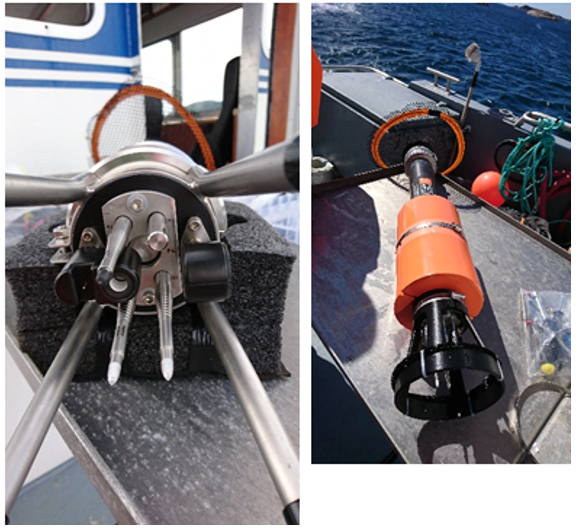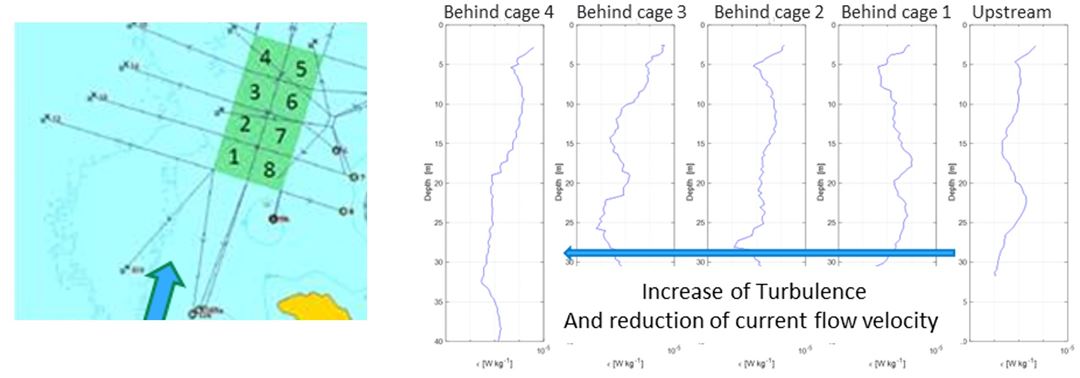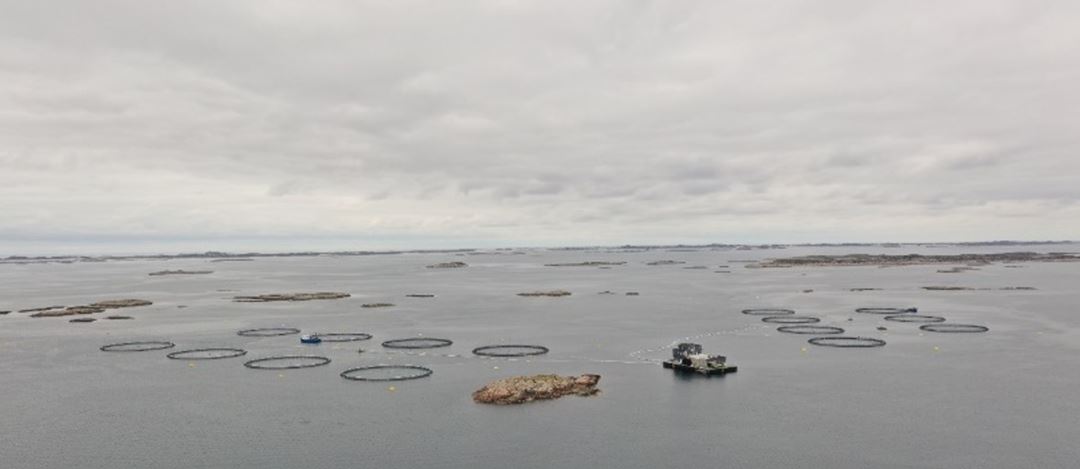The primary objective of this project was to assess if and to what extent farm layout creates local zones with high lice larvae concentrations. The research outcomes will provide knowledge about optimal farm layout, which in turn will be crucial for developing functional and non-chemical mitigation measures. This will be advantageous as it will reduce the use of post-infection treatments against sea lice.

Micro Turbulence profiler
Secondary objectives:
- Determine 3D microscale current flow patterns around and within salmon farms.
- Map the distribution of pelagic lice around and within farms in relation to variations in microscale current flow patterns.
- Assess the relationship between the abundance of sessile lice on farmed salmon among cages within farms and current flow patterns.
- Develop a coupled biophysical model for assessment of how physical parameters influence the lice abundance around and within farms.
Results and Expected utility values:

Measurements of current flow and sampling of pelagic lice larvae around and within different fish farms have been performed. A complex 3D current flow pattern has been measured in the vicinity of the farm; Analysis shows the presence of stocked aquaculture sea-cages significantly and consistently altered the intensity and distribution of turbulence levels, and hence the mixing regime, on the lee side of cages. It has been shown that turbulence is increasing at the farm level with an increasing number of cages.
A novel method to collect plankton samples around and inside sea cages has been developed for measurements of abundance of pelagic sea lice larvae. Analysis indicate that lice larvae abundance varies significantly among farms, depths and location; the use of skirts as lice barriers, appear to influence the vertical distribution of lice larvae such that the larvae aggregate at the bottom of the skirts. A result from the analysis method, is the precision improves with increasing lice density when analysis effort is the same, and that it is difficult to measure lice densities precisely though manual analysis of plankton samples if the densities are low (< 0,5 lice per m3). This indicate that lice densities reported by some previous studies have may be regarded as relatively unprecise. In addition, different statistical approaches have been used to analyse salmon lice abundance on the farmed fish as recorded regularly by farmers, per cage and during several cycles of the salmon grow-out phase. Analysis suggest that groupings occur frequently among cages: it shows a broad agreement in terms of cluster membership and indicated that there were characteristics that varied consistently among cages, which may be driven by common environmental influences such as current flows within and between cages.

